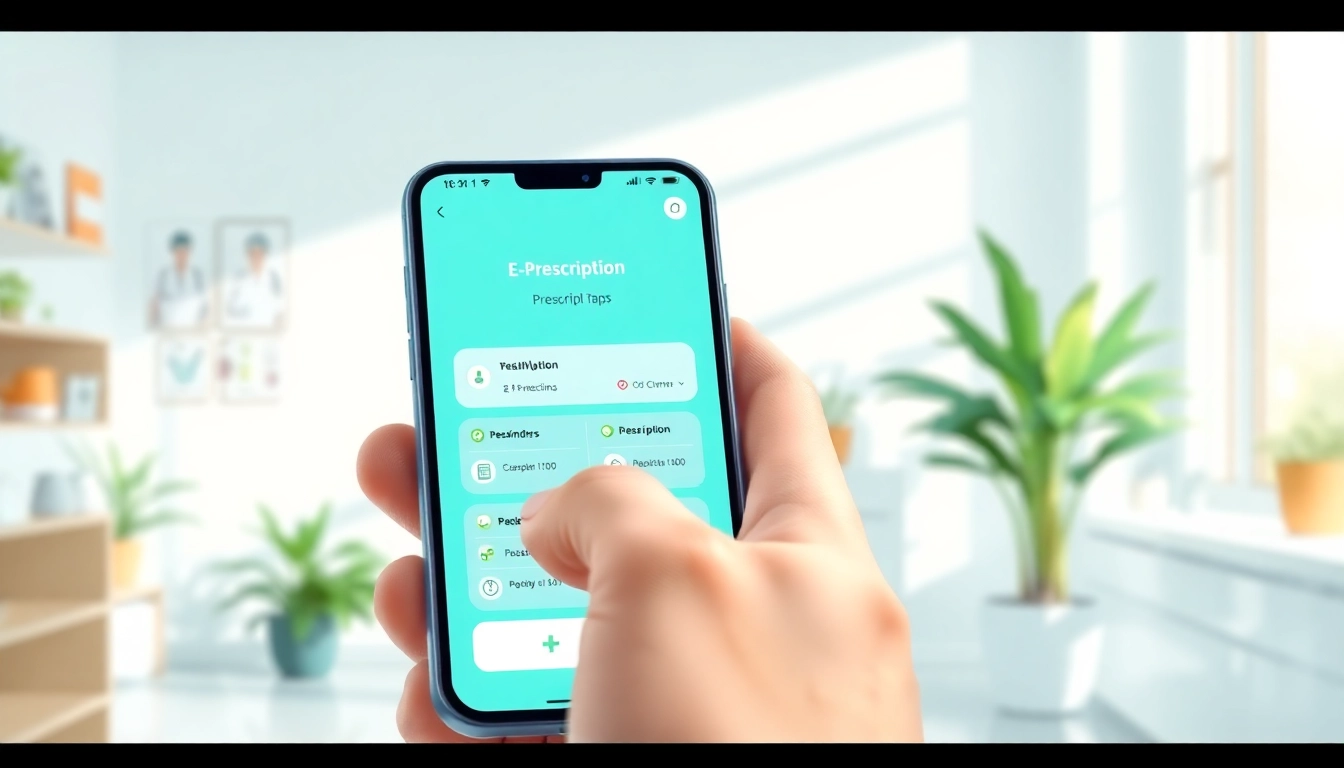Introduction to E-Prescribing
E-prescribing is transforming the way prescriptions are written and filled in the healthcare landscape. At its core, e-prescribing allows healthcare providers to send prescriptions directly to pharmacies through electronic systems, improving efficiency, accuracy, and patient safety. As healthcare continues to evolve, understanding how does eprescribing work becomes crucial for both providers and patients. This comprehensive article will delve into the mechanics of e-prescribing, its benefits, the technologies involved, its impact on healthcare, current challenges, and what the future holds for this digital evolution in prescribing medication.
What is E-Prescribing?
Defining E-Prescribing
E-prescribing, or electronic prescribing, is a digital way to generate, transmit, and fill a medical prescription. Healthcare providers use e-prescribing software to input prescription information into a secure digital format, which is then securely sent to the patient’s chosen pharmacy. Unlike traditional paper prescriptions, e-prescribing allows for real-time access to patient medication histories and formulary checks, reducing the risk of errors and improving efficiency.
Benefits of E-Prescribing
The benefits of e-prescribing are extensive. They include:
- Increased Accuracy: By eliminating handwritten prescriptions, e-prescribing drastically reduces errors related to misinterpretation or illegible handwriting.
- Improved Patient Safety: E-prescribing enables providers to quickly check for potential drug interactions and allergies to ensure patient safety.
- Enhanced Efficiency: Prescribers can transmit prescriptions in real-time, reducing wait times for patients at pharmacies and improving workflow for healthcare practitioners.
- Cost Effectiveness: E-prescribing can help identify lower-cost alternatives or generics and streamline the prescription fulfillment process. This may lead to reduced overall costs for both patients and healthcare systems.
- Environmental Benefits: Going digital helps reduce paper waste, contributing positively to environmental sustainability.
Understanding the Terminology
Familiarity with key terms surrounding e-prescribing can help stakeholders engage more effectively with the technology. Important terms include:
- Electronic Health Records (EHR): Digital versions of patients’ paper charts, where e-prescribing tools are typically integrated.
- Prescription Routing: The process by which a prescription is forwarded from a provider to a pharmacy.
- Drug Formulary: A list of medications that are approved to be prescribed within a certain healthcare system.
- Controlled Substances: Drugs that have restrictions on prescribing and filling due to their potential for abuse or addiction.
How Does E-Prescribing Work?
Steps in the E-Prescribing Process
The e-prescribing process can generally be broken down into the following steps:
- Patient Assessment: The provider assesses the patient’s condition and determines the necessary medication.
- Prescription Creation: Using e-prescribing software, the provider enters the prescription information, including drug name, dosage, frequency, and other pertinent instructions.
- Electronic Signature: The prescriber digitally “signs” the prescription, ensuring its authenticity and security.
- Prescription Transmission: The signed prescription is transmitted electronically to the chosen pharmacy, utilizing secure communication protocols.
- Pharmacy Receipt: The pharmacy receives the prescription and verifies its contents, checking for potential drug interactions and insurance coverage.
- Patient Notification: The pharmacy notifies the patient when the prescription is ready for pick-up or if there are any issues that need to be addressed.
Technologies and Tools Used
E-prescribing relies on several technologies and tools that facilitate secure, efficient, and accurate prescription processes:
- EHR Systems: Most e-prescribing occurs within EHR systems, allowing for seamless integration with patient records.
- e-Prescribing Software: This software enables providers to create, manage, and send prescriptions digitally, often featuring built-in clinical decision support.
- Secure Messaging Protocols: Technologies such as Secure Sockets Layer (SSL) and Transport Layer Security (TLS) ensure that the data transmitted between providers and pharmacies is encrypted and secure.
- Smartphone Apps: Some systems also offer mobile applications, allowing patients to manage their prescriptions directly from their devices.
Interaction with Electronic Health Records
One of the most significant aspects of e-prescribing is its integration with EHR systems. This relationship allows healthcare providers to access comprehensive patient information seamlessly, streamlining various processes:
- Unified Patient Data: Consolidated patient records allow providers to see a complete medication history, including previous prescriptions, allergies, and comorbidities, aiding in more informed prescribing.
- Automated Alerts: EHR systems can generate alerts for potential drug interactions or allergy warnings in real-time as prescriptions are created.
- Data Analytics: EHRs can provide analytics on prescribing patterns, which can enhance clinical decision-making and improve outcomes.
Impact of E-Prescribing on Healthcare
Improving Patient Safety
One of the paramount advantages of e-prescribing is its ability to enhance patient safety. The reduction in prescription errors directly correlates to a decrease in adverse drug events. Electronic systems allow for easier identification of possible medication conflicts, alerts about allergies, and more accurate dosing information.
Enhancing Prescription Accuracy
E-prescribing significantly boosts prescription accuracy by minimizing human error associated with manual entries. With clear electronic formats and automated checks for potential mistakes, prescribers can ensure that patients receive the correct medications as intended.
Streamlining Pharmacy Operations
Beyond benefits for providers and patients, e-prescribing also streamlines pharmacy operations. Automated processes reduce the time spent on clarifications and resending prescriptions, ultimately allowing pharmacies to serve more patients effectively. This operational efficiency can translate to shorter wait times for patients and improved service quality.
Challenges and Considerations
Barriers to Adoption
Despite the benefits, the adoption of e-prescribing faces various barriers, including:
- Cost of Implementation: Smaller practices may lack the financial resources to invest in e-prescribing solutions, making it difficult for them to transition from paper-based systems.
- Training and Familiarization: Staff and providers require training to adapt to new technologies, and resistance to change can further complicate the transition process.
- Interoperability Issues: Different e-prescribing systems may lack compatibility, making it challenging for different providers and pharmacies to communicate effectively.
Compliance and Regulatory Issues
Regulatory compliance is critical in healthcare, and the implementation of e-prescribing comes with its own set of compliance requirements. The Health Insurance Portability and Accountability Act (HIPAA) mandates secure handling and privacy of patient information, which necessitates ongoing evaluation of systems to ensure adherence.
Data Security and Privacy Concerns
With the increased digital transmission of sensitive patient information, data security and privacy become paramount. Providers and pharmacies must invest in robust security measures to prevent data breaches and protect patient confidentiality. Regular audits and updates to security protocols are essential to mitigate risks associated with cyber threats.
Future of E-Prescribing
Emerging Trends in E-Prescribing
The future of e-prescribing points towards ongoing advancements and better integration with other healthcare technologies. Notable trends include:
- Enhanced Decision Support Tools: Future systems will likely feature more sophisticated decision support tools that utilize machine learning and artificial intelligence to provide personalized prescribing recommendations.
- Telemedicine Integration: The rise of telehealth services is expected to dovetail with e-prescribing, allowing providers to issue prescriptions online during virtual consultations.
Integration with Other Health Technologies
Future advancements will focus on further integration with various health technologies to create a more comprehensive approach to patient care. This might include linking e-prescribing to wearable health devices, remote monitoring systems, and comprehensive pharmacy management systems.
Predictions for E-Prescribing Developments
As e-prescribing technology evolves, it is expected to play an increasingly significant role in shaping patient-centered care. Predicted developments include:
- Widespread Adoption: Increased regulatory support and education efforts are expected to catalyze broader adoption among healthcare providers.
- Cross-Disciplinary Collaboration: Enhanced collaboration between stakeholders, including providers, pharmacies, and health systems, will be crucial in maximizing the benefits of e-prescribing.
- Global Standards: Efforts to establish global standards for e-prescribing will help facilitate better interoperability across countries and systems.
In conclusion, e-prescribing is redefining how medications are prescribed, filled, and monitored. By understanding how does eprescribing work, stakeholders can leverage its benefits to promote safer, more efficient healthcare delivery.



